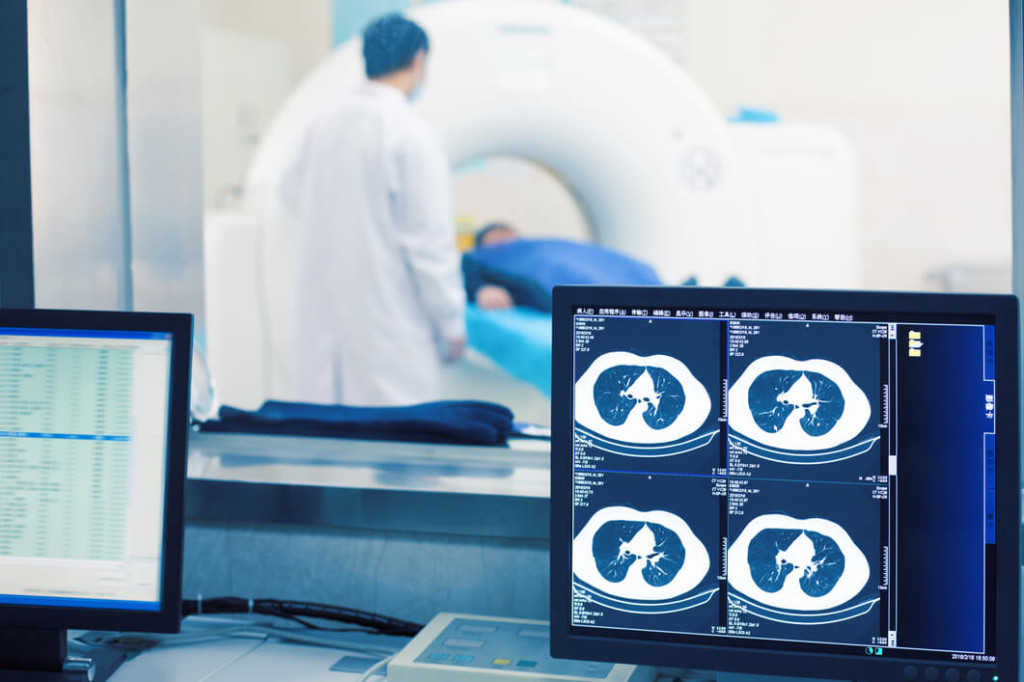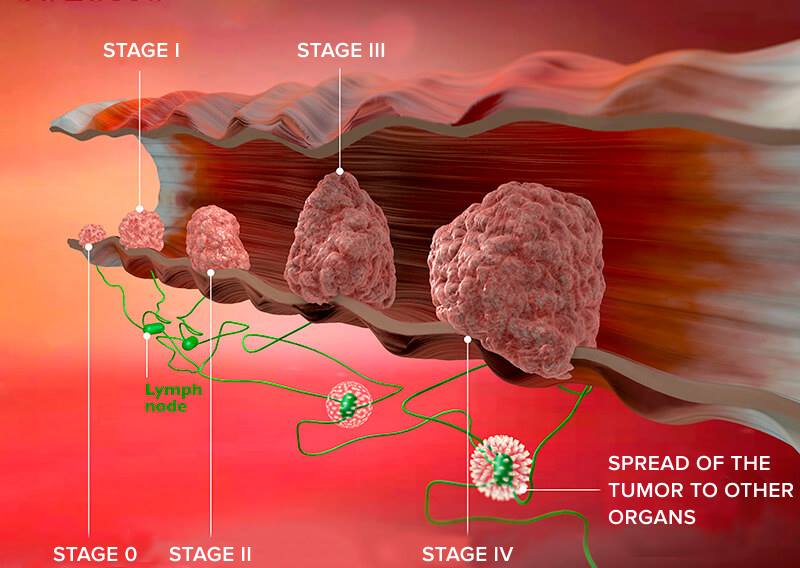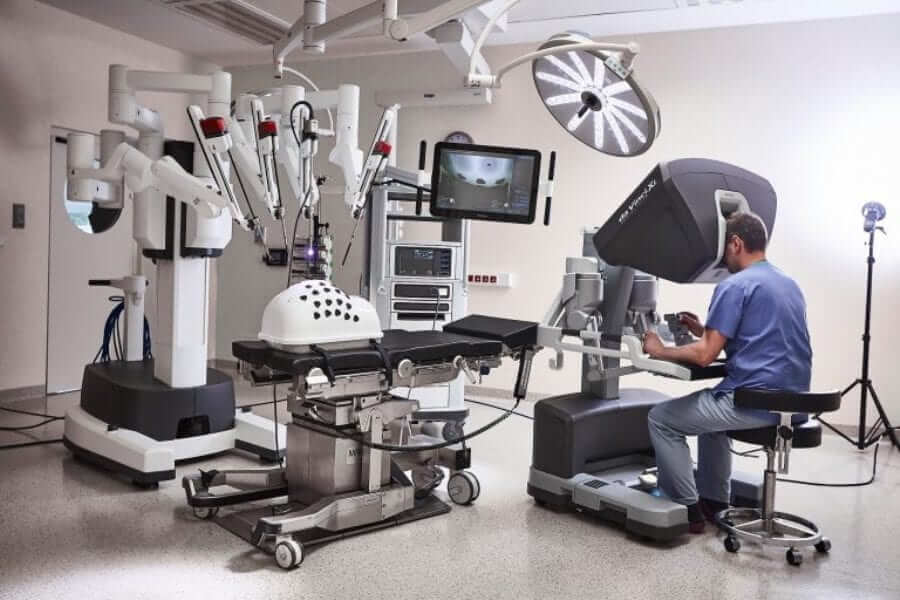Calls for Ukraine
Calls for Europe
Calls for USA

Stomach cancer is one of the most common cancers of the digestive system. A malignant tumor (adenocarcinoma) occurs due to abnormal cell division of the stomach lining. The neoplasm can be localized in different parts of the organ: in the upper (next to the esophagus), in the body (the main part of the stomach) and in the lower (near the intestines). As it grows, the tumor grows into muscle tissue and spreads to other organs.
Scientists have not identified the exact cause of stomach cancer. According to the NCI (US National Cancer Institute), there are risk factors that increase the likelihood of developing the disease. The most common reasons include:
Experts refer to additional factors influencing the development of stomach cancer:
In the initial stages, stomach cancer develops asymptomatically. When the disease progresses, the patient develops the first symptoms of stomach cancer: he experiences discomfort in the abdomen, aversion to meat foods.
When contacting a doctor, most often, a patient with an oncological disease reveals the following complaints:
The most alarming symptoms that require an immediate visit to the oncologist:
The purpose of diagnostics in case of suspected oncology is to verify the diagnosis, to determine the stage and area of spread of the tumor. Only a professional oncologist knows how stomach cancer is determined. The further treatment plan and prognosis for the patient will depend on the results of the diagnosis.

The doctor can prescribe such examinations if cancer is suspected:
CT scan:
Examination with PET-CT:

After diagnosing a patient, the doctor can determine one of the stages of stomach cancer, which is characterized by:
Stomach cancer responds well to treatment in the first stage – the survival rate is 95%, while about 70% of patients achieve full recovery.
At the second stage, the 5-year boundary is about 56%, and full recovery of patients is observed in 28% of cases.
In patients with stage III cancer, the five-year survival rate is 38%, in the absence of metastases, 26% of people recover completely.
The five-year survival rate for stage four gastric cancer is 5-15% of patients. With an advanced form of cancer, the prognosis is poor. Therefore, it is important to start treatment as soon as possible.

For stomach cancer of the 1st, 2nd and 3rd stages without metastases, the main method of treatment is surgery. At the 4th stage of the disease, doctors carry out combination therapy.
Surgical intervention
Depending on the location and size of the tumor, surgeons use one of the intervention options:
Examples of prices for gastric cancer surgery in TOP clinics in different countries:
Radiotherapy
The oncologist may prescribe radiation therapy to reduce the amount of surgery. After surgery, radiotherapy destroys the remaining abnormal cells. In the 4th stage of gastric cancer, the radiation procedure helps to reduce the symptoms.
Chemotherapy
In accordance with current gastric cancer treatment protocols, the physician must prescribe chemotherapy to the patient prior to surgery. This recommendation applies to tumor surgery starting from the first stage of the disease.
Chemotherapy for stomach cancer after surgery prevents relapse and improves survival. In the later stages of the disease, taking chemotherapy drugs improves the patient’s quality of life.
Targeted therapy
Taking targeted drugs helps block the growth and division of cancer cells. The use of targeted therapy is indicated in the case of genetic mutation of cancer cells.
Immunotherapy
The doctor may prescribe the immuno-oncology drug Pembrolizumab (Keytruda) if other treatment options have not worked well. The medicine helps the body recognize exclusively malignant cells and destroy them.
Cancer centers, mostly foreign, are equipped with modern equipment for operations and therapy. For a successful low-traumatic intervention, surgeons use the Da Vinci robotic assistant.
Da Vinci is a robotic system for precise and low-trauma operations. Using a special console, the doctor controls the surgical unit. He controls the operational process using a 3D visualization system. All manipulations to remove the tumor are carried out through 5 incisions 1-1.5 cm in size.
Surgery with the help of Da Vinci reduces the risk of bleeding, infections, damage to healthy tissues, and reduces pain after the intervention. As a result, the patient recovers within 2-3 weeks. After open surgery, recovery takes several months.
NanoKnife Application
Irreversible electroporation is a procedure in which doctors treat a tumor with an electric current. The advantage of this treatment is that the thin NanoKnife allows destroy the neoplasm in hard-to-reach places.
The doctor inserts several special needles into the tumor area, which act on it with current. The procedure is low-traumatic, after it the patient does not need long-term rehabilitation
Irradiation with the Gamma Knife
Doctors use the Gamma Knife radiosurgical unit to accurately irradiate neoplasms. The system produces radiation beams that pass through healthy tissue and infect a malignant tumor with a high dose of radiation.
Doctors use the Gamma Knife for inoperable tumors. The procedure is painless, the patient does not need anesthesia and rehabilitation.
Proton therapy
This is a type of radiation therapy that acts on the tumor with accelerated ionizing particles. Proton therapy destroys neoplasms without damaging healthy tissue.
During a proton therapy session, the patient lies on a table with a device rotating around him that produces proton beams. The procedure takes 30 minutes. The patient does not require hospitalization in the clinic.
The cost of surgery for stomach cancer depends on the method of removing the tumor. If the neoplasm is inside the organ, then a radical operation to remove the stomach will be required. Such an intervention is more complicated and more expensive than an endoscopic procedure.
If the patient prefers to undergo treatment in a foreign clinic, then it is necessary to take into account the costs of the flight and payment for the service of the medical institution.
The formation of the final cost is influenced by: the volume of diagnostic measures, a complex of medical procedures and options for additional therapy.
Examples of the cost of gastric cancer treatment in different countries
The cost of surgery for gastric cancer on a Da Vinci robot:
Irradiation of the tumor with the Gamma Knife system:
Immunotherapy with Keytruda:
Please rate the work of MedTour
